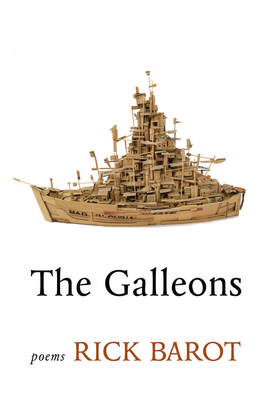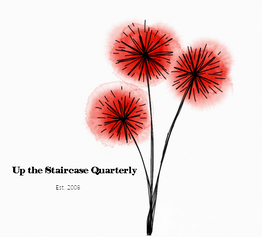The Galleons by Rick Barot
Review by Rachel Stempel.
I’m late to the Rick Barot fan club—his CV is no stranger to praise. His first collection, The Darker Fall , came out almost two decades ago and won the 2001 Kathryn A. Morton Prize in Poetry. His second, Want , won the 2009 Grub Street Book Prize. His third, Chord won the PEN/Open Book Award and the 2016 UNT Rilke Prize. And his most recent, The Galleons, was longlisted for the 2020 National Book Award. I open my discussion with reference to these accolades because I can and should, though the impact of his work resists summation.
A poet, writer, and educator, Barot was born in the Philippines, grew up in the San Francisco Bay Area, attended Wesleyan University and Iowa’s Writer Workshop, is the poetry editor of New England Review, teaches at Pacific Lutheran University, and directs PLU’s low-residency MFA, The Rainier Writing Workshop. Barot is a successful creative—this is easy to articulate. The Galleons, as a force, is not.
In her blurb, Cate Marvin describes it as a “book of realizations,” writing that it’s “important … for our time.” Oliver de la Paz says these poems “achingly coalesce into understandings of art and domination.” This is a transcendent collection that asks to be read and reread. That’s not to say these 28 poems written exclusively in couplets are inaccessible; in fact, they are unapologetically consumable.
The first poem, in conversation with John Keats and aptly titled “The Grasshopper and the Cricket,” begins: “The poetry of earth is a ninety-year-old woman / in front of a slot machine in a casino in California.”
In “The Blink Reflex,” Barot writes, “I realize that the shard and not the whole / comprises a life, the image and not the narrative.”
Later, there’s a reference to the irreverent Letters to Wendy’s by Joe Wenderoth.
Then, a reference to Frank O’Hara.
Then, another shattering line: “The living continually outgrowing / the fallen and decaying.”
Then, “I saw things/ mostly as they were, which meant a kind of health.”
Then, “The name a fossil.”
Then, a jarring direct address: “You are near or you are far, / depending on the accuracy of the words I have chosen.”
Then, a Walt Whitman reference nestled in a Jack Spicer reference.
And always, lists—environmental observations, physical ticks of airplane passengers.
Some of the most striking in the collection are titular. “The Galleons 2” reads like a ship’s manifest: “sugar, food for months, not enough food, not enough water.”
“The Galleons 5” merges two parallel voices—one from a recording of an interview Barot conducted with his maternal grandmother and Barot in the present listening to the tape “as though … her past and her love could be vectors of use.” He laments, “what I actually needed to know I would … have to conjure for myself.”
Barot said in an interview with Milkweed that he explored the couplet form with an interest in this parallelism, explaining he “was having an intense engagement with the work of Agnes Martin” at the time and pulled from the artist’s “obsessive vocabulary” inherent in her work.
The central and longest poem, “The Galleons 6,” contains 88 couplets listing 176 Spanish galleons chronologically from 1564 to 1815. Galleons were large cargo ships used from the 1500s to 1700s to carry goods and people, both stolen. In an interview with BOMB Magazine, Barot says the book “is partly an elegiac consideration of [his grandmother’s] long life.” Through this consideration, Barot deconstructs an American definition of “immigrant” to reveal conditioned fallacies about othered identity through the personal and familial, calling attention to the overlap between the colonialism we are taught is history and the neocolonialism we are taught is progress.
Then, you read it again (and again) to equip yourself with the tools he lays out in a “bitter/cartography”—an inventory of ways of seeing. The Galleons, then, is a craft book. A lifestyle guide. And, as written in “The Blink Reflex,” a “story of spiritual illumination.”
I’m late to the Rick Barot fan club and would like to thank my professor, poet Jan-Henry Gray, for assigning The Galleons to our workshop class as a text that illuminates the connective objectives of poetry.
I’m late to the Rick Barot fan club—his CV is no stranger to praise. His first collection, The Darker Fall , came out almost two decades ago and won the 2001 Kathryn A. Morton Prize in Poetry. His second, Want , won the 2009 Grub Street Book Prize. His third, Chord won the PEN/Open Book Award and the 2016 UNT Rilke Prize. And his most recent, The Galleons, was longlisted for the 2020 National Book Award. I open my discussion with reference to these accolades because I can and should, though the impact of his work resists summation.
A poet, writer, and educator, Barot was born in the Philippines, grew up in the San Francisco Bay Area, attended Wesleyan University and Iowa’s Writer Workshop, is the poetry editor of New England Review, teaches at Pacific Lutheran University, and directs PLU’s low-residency MFA, The Rainier Writing Workshop. Barot is a successful creative—this is easy to articulate. The Galleons, as a force, is not.
In her blurb, Cate Marvin describes it as a “book of realizations,” writing that it’s “important … for our time.” Oliver de la Paz says these poems “achingly coalesce into understandings of art and domination.” This is a transcendent collection that asks to be read and reread. That’s not to say these 28 poems written exclusively in couplets are inaccessible; in fact, they are unapologetically consumable.
The first poem, in conversation with John Keats and aptly titled “The Grasshopper and the Cricket,” begins: “The poetry of earth is a ninety-year-old woman / in front of a slot machine in a casino in California.”
In “The Blink Reflex,” Barot writes, “I realize that the shard and not the whole / comprises a life, the image and not the narrative.”
Later, there’s a reference to the irreverent Letters to Wendy’s by Joe Wenderoth.
Then, a reference to Frank O’Hara.
Then, another shattering line: “The living continually outgrowing / the fallen and decaying.”
Then, “I saw things/ mostly as they were, which meant a kind of health.”
Then, “The name a fossil.”
Then, a jarring direct address: “You are near or you are far, / depending on the accuracy of the words I have chosen.”
Then, a Walt Whitman reference nestled in a Jack Spicer reference.
And always, lists—environmental observations, physical ticks of airplane passengers.
Some of the most striking in the collection are titular. “The Galleons 2” reads like a ship’s manifest: “sugar, food for months, not enough food, not enough water.”
“The Galleons 5” merges two parallel voices—one from a recording of an interview Barot conducted with his maternal grandmother and Barot in the present listening to the tape “as though … her past and her love could be vectors of use.” He laments, “what I actually needed to know I would … have to conjure for myself.”
Barot said in an interview with Milkweed that he explored the couplet form with an interest in this parallelism, explaining he “was having an intense engagement with the work of Agnes Martin” at the time and pulled from the artist’s “obsessive vocabulary” inherent in her work.
The central and longest poem, “The Galleons 6,” contains 88 couplets listing 176 Spanish galleons chronologically from 1564 to 1815. Galleons were large cargo ships used from the 1500s to 1700s to carry goods and people, both stolen. In an interview with BOMB Magazine, Barot says the book “is partly an elegiac consideration of [his grandmother’s] long life.” Through this consideration, Barot deconstructs an American definition of “immigrant” to reveal conditioned fallacies about othered identity through the personal and familial, calling attention to the overlap between the colonialism we are taught is history and the neocolonialism we are taught is progress.
Then, you read it again (and again) to equip yourself with the tools he lays out in a “bitter/cartography”—an inventory of ways of seeing. The Galleons, then, is a craft book. A lifestyle guide. And, as written in “The Blink Reflex,” a “story of spiritual illumination.”
I’m late to the Rick Barot fan club and would like to thank my professor, poet Jan-Henry Gray, for assigning The Galleons to our workshop class as a text that illuminates the connective objectives of poetry.
|
Rick Barot was born in the Philippines and grew up in the San Francisco Bay Area. He is the author of The Galleons, as well as three previous collections of poems: The Darker Fall; Want; which was a finalist for the Lambda Literary Award and won the 2009 Grub Street Book Prize; and Chord. Chord received the UNT Rilke Prize, the PEN Open Book Award, and the Publishing Triangle’s Thom Gunn Award. It was also a finalist for the Los Angeles Times Book Prize. His work has appeared in numerous publications, including Poetry, the New Republic, Tin House, Kenyon Review, and the New Yorker. He has received fellowships from the National Endowment for the Arts, the Artist Trust of Washington, the John Simon Guggenheim Memorial Foundation, and Stanford University. He is the poetry editor for New England Review. He lives in Tacoma, Washington, and directs The Rainier Writing Workshop, the low-residency MFA program in creative writing at Pacific Lutheran University. |


